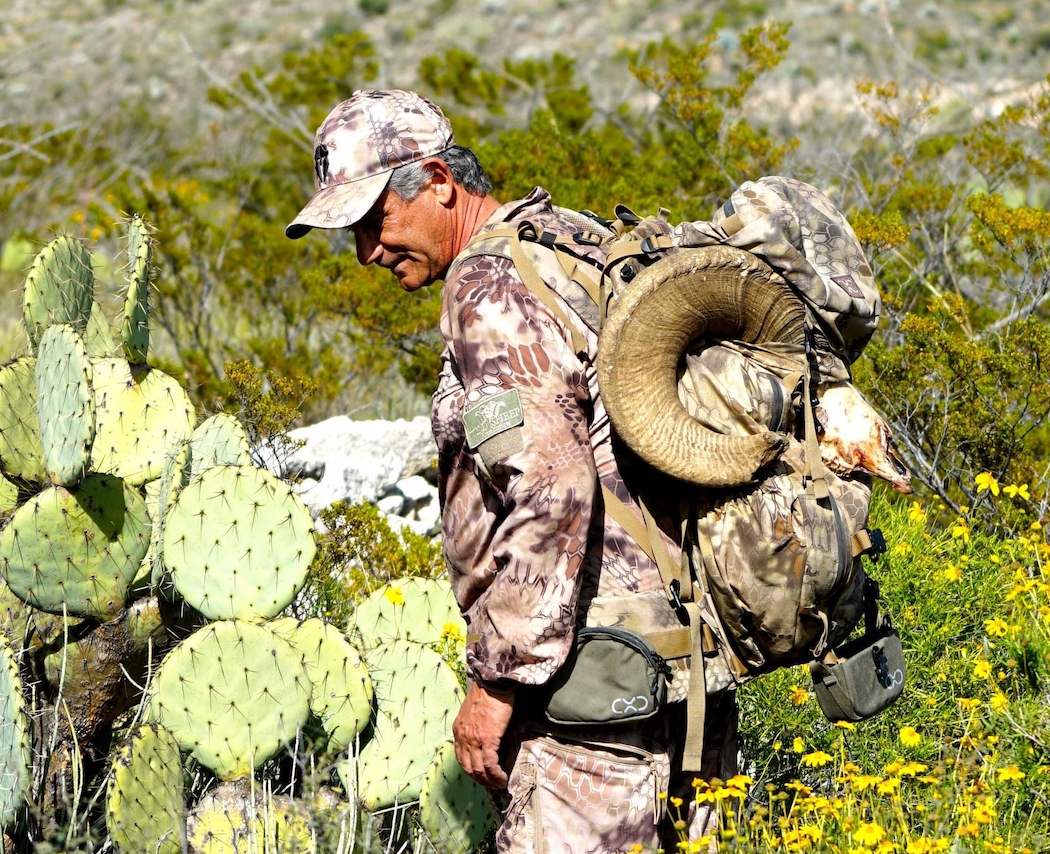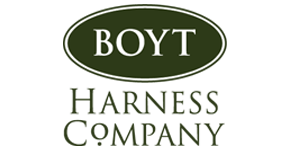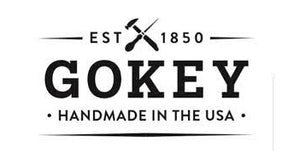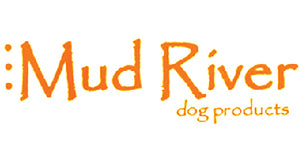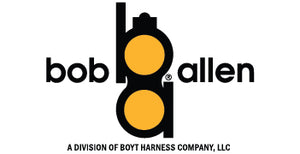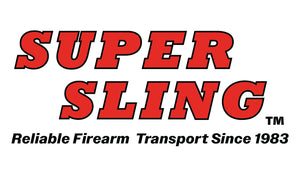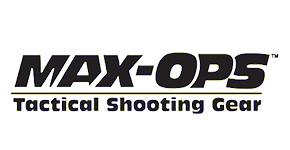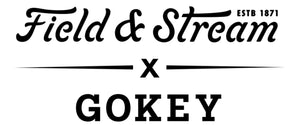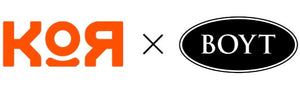Hunting big game in North America often involves lengthy airplane rides to western Canada, Mexico and Alaska.
Along with the logistics of a long flight, today's big game hunters have to export their rifles into a foreign country and get them there in perfect shape. Though the paperwork can seem overwhelming at first, contrary to popular belief, the task is not insurmountable. The first step is to buy a quality hard case and fit the rifle to the interior. Hard cases are available in a variety of materials including aluminum, various plastics, rigid vinyl and even stainless steel, but the industry standard for protection remains in cases that are injected molded from high impact polypropylene copolymer. Injection molded polypropylene allows for a case to be molded with round corners, contoured handles, built in wheel housings, and a molded in gasket channel that keeps the contents dry and dust free. On metal cases or cases made from plastic panels, all of the above has to be welded or bolted on after the fact and is subject to breaking off when you need them the most. More than anything, injection molded cases allow the manufacturer to work with heavy, dense resins that are almost indestructible. I know that heavy goes against the grain of every big game hunter who has ever cut off his toothbrush handle to save an ounce of weight in his backpack, but in the case of travel cases, heavy is good! A hard case's main function is to absorb impact should the case ever be thrown, dropped or otherwise mishandled, and basic physics tell us that weight is the best way to counter impact. As such, a heavy travel case is the simple secret behind protecting a firearm.
Elite military and law enforcement units around the world know that "secret," but as big game hunters, we have a fixation on the "lighter is better" theory. Consider the fact that heavier rifles absorb more recoil. The same principal applies to a hard gun case. Simply put, nothing will protect a rifle more than the weight of the case, so for starters, plan on something that weighs a minimum of twenty pounds empty. Having been in the hard case business for more than two decades, I have personally been involved in hundreds of tests both in our factory and at independent testing facilities where we have dropped, banged and otherwise abused rifles and scopes in various hard cases. In all the tests, the heavier the case, the less damage to the optics. In addition to the structural integrity, look for a case that has a rubber gasket, comfortable handles and latches that will stay closed when a rogue luggage handler having a bad day gets his hands on it.
The Boyt H Series, Cabela's Amour Extreme, and Bass Pro Shops Red Head Premium line cases are all injected molded from variants of high impact polypropylene and all feature lifetime warranties and are made in the United States. Personally, I like a case with padlock bosses over a case with built-in locks for the simple reason that a high quality padlock is generally more secure, and since I am prone to losing small things like keys, they can be cut off and replaced if necessary. Many built-in case locks can be pried open with a screw driver while a quality pad lock will require substantial more effort to cut or break. The word "airline approved" gets thrown around quite a bit, but to my knowledge, there is not a list of approved cases on file with any of the major airlines. TSA regulations state the firearm must be in a secured case, and the word secured can be pretty subjective depending on the agent and airport, so be prepared for the worse and hope for the best. For example, some cases, will pry open at one end or another even if the case is locked with a padlock. To meet the secure definition of TSA, the case needs a padlock at either end. Most agents will never check it but they do in Anchorage, and take it from personal experience, it is no fun to have to jump in a cab with all of your luggage, race to a hardware store and then get back to the airport to go through the check-in process all over again. With regards to the case's interior, rifles and optics are much better protected by foam that is profile cut for a specific rifle and scope rather than egg crate foam where the rifle simply cradles between the layers. This will better protect your optics, including all the scope components, so you won't have any nasty surprises when it comes to opening the case. Some people choose to keep their optics in a separate case, which is perfectly reasonable if you are going on an extended trip and have the opportunity to re-calibrate the sights.
Cutting foam gets a bad rap because many hunters have had tough experiences with cutting cheaper, low-density foam. Quality high-density foam actually cuts crisply and is easily facilitated with a new utility knife blade sans the handle. Be sure and cut out a designated pocket for the bolt, as it needs to be removed for travel and cutouts for any other pieces of gear that will go into the hard case as well. Make sure that you have a minimum of three inches from the edge of the foam top to bottom and side to side when tracing around your rifle. Once my rifle is fitted to the case, I tape around my turret caps to keep them from getting intentionally or accidently turned during any inspection processes where they might be out of my direct control. Once your case is fitted, locked and secure, you are ready to fly anywhere in the United States on virtually every domestic carrier. Big game hunts to Canada or Mexico will require some additional paperwork.
In Canada
When flying to Canada, big game hunters generally have a choice of Edmonton, Calgary or Vancouver as an initial entry point into the country. After traveling through all three on numerous occasions in the past few years, I can say that Edmonton is by far the best gateway airport when coming into Canada with a firearm. The customs agents are very hunter friendly and take a genuine interest in making sure you get through the import process in an expedient manner. The entire process takes about fifteen minutes start to finish. In Vancouver, I have waited up to two hours to get a firearm processed and during heavy cruise ship schedules, which often coincide with many August big game seasons, customs can be backed up even more. Calgary is a little better but the process does not seem to run as smooth as it does in Edmonton and generally involves a longer waiting time. The actual import process for bringing a bolt-action hunting rifle into Canada is relatively painless.
You can download a Non-Resident Firearms Declaration form at several websites including www.canadawelcomesyou.net. Fill out one form and make three copies but do not sign it until asked to by the customs officer in Canada. When you arrive simply state on the declaration form that you are traveling with a firearm, pick up your rifle at the oversize baggage belt and you will be directed to an area where a Canada customs official will check your rifle against the form and point you towards a cashier's window where you will pay a $25 fee (credit card or Canadian cash only) and then be on your way. If you travel frequently to Canada with firearms you may want to consider applying for a Canadian Possession and Acquisition license (PALS). The process is a little more involved and requires passing a firearms safety test but it is valid for five years and only requires a one-time fee. Technically, a rifle in Canada needs a trigger lock during transport along with the hard case, although this rule is not uniformly enforced, just the same, I always have one on my rifle just in case.
There are other things you need to consider when traveling around Canada too. For example, did you know that if you have any convictions on your Canadian Criminal Record (CCR) you can be denied entry to the US? It is therefore in your best interest to avoid any dangerous or illegal activities while in Canada. While pardon services are available to suspend criminal records in Canada, it is still important to avoid getting a conviction in the first place. If you would like to learn more about the Canadian pardons and waivers process, the Federal Pardon Waiver Services website is a useful resource and explains the legalities surrounding Canadian criminal records in detail.
In Mexico
Bringing a rifle into Mexico is a little more complicated but not really difficult. I have cleared Mexican customs with a firearm more than 20 times in the last 15 years and have only had a few minor issues. The big difference between Mexico and Canada is that in Mexico, your outfitter will have to apply for your gun permit well ahead of your arrival. Regardless of what your outfitter may tell you, never under any circumstances should you attempt to enter Mexico without a copy of your gun permit. The actual permit will be waiting for you at the military desk when you arrive at the airport but having a copy pretty much assures you that your paperwork is in order and all pertinent information is correct. Like Canada, the arrival city is very important to the process. I have entered Mexico with firearms at Guymas, Nogales and Hermosillo. They are very accustomed to dealing with firearms in Hermosillo and while I did not have problems at the other entry ports, it is always quick, easy and less painless in Hermosillo. Regardless of your arrival city in Mexico, absolutely never bring ammo in a caliber different from your rifle and do not bring in any more cartridges than your permit allows, as both are serious offenses in Mexico.
In Canada and Mexico both, you should always keep your permit and a government form of identification on your person at all times you are in possession of your firearm. It is not uncommon, if not a bit unnerving to have Mexican authorities stop you while hunting to check your firearm's permit. If you don't have it with you, expect a long sorting out period and a possible trip back to Hermosillo. If all of this seems complicated, keep in mind that the U.S. export process proposed by our own government just a few short months ago was much more complicated and invasive (not to mention more expensive) than what Canada or Mexico requires for importation. Thankfully, the new process has been put on hold at least temporally but we are still on seat edges waiting for what happens next. For the upcoming fall season (unless something new is proposed in the next month or so), all that is needed is the U.S. Customs Form 4457, proof of ownership slip that is easily obtained from any U.S. customs agent in most major cities.
Lastly, if you don't want to tackle any of the above on your own, there are any number of reputable folks out there who will help you for a small fee, just Google "traveling with guns" to get more information.
Until next time, Tony Caligiuri

